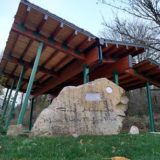Roofing FAQ
Q? I want to know any roofing terms!
A. At Element Smart Roofing, we want our customers to be as informed as possible so that they can make the best decisions about their home’s roof. Here are some common roofing terms and definitions that you may hear during the course of your roofing project. If you have any questions about any part of your roof or the roofing process, please do not hesitate to ask for an explanation! Full List: Roofing Glossary
Q? What is a ridge?
A. The ridge is the top of your roof, which runs level to the ground (does not have slope). The ridge is usually covered with ridge caps (short shingles laid in a straight line) or, preferably, with a ridge vent.
Q? How can a home owner recognize when a roof system has problems?
A. All too often, roof system problems are discovered after leaking or another serious damage occurs. Periodic (twice-a-year) inspections often can uncover cracked, warped or missing shingles; loose seams and deteriorated flashings; excessive surface granules accumulating in the gutters or downspouts; and other visible signs of roof system problems. Indoors, look for cracked paint, discolored plasterboard, and peeling wallpaper as signs of damaged roof areas.
Q? What are my options if I decide to reroof?
A. You have two basic options: You can choose a complete replacement of the roof system, involving a tear-off of your existing roof system, or re-cover the existing roof system, involving only the installation of a new roof system. If you’ve already had one re-cover installed on your original roof system, check with a professional roofing contractor. In many instances, building code requirements allow no more than one roof system re-cover before a complete replacement is necessary.
Q? My roof leaks. Do I need to have it replaced completely?
A. Not necessarily. Leaks can result from flashings that have come loose or a section of the roof system being damaged. A complete roof system failure, however, generally is irreversible and a result of improper installation or choice of materials or the roof system installation is inappropriate for the home or building.
Q? If I think I have tree or snow damage what should I do?
A. Call your insurance company and ask for an adjuster to come inspect your roof for damage done by a storm or fallen tree branch. Call Element Smart Roofing and ask for the same inspection. If there are any discrepancies between the adjuster’s findings and the roofer’s findings you may call for a “RE-INSPECTION” where your adjuster meets with the roofer to go over the roof together. Re-inspections are very common. The insurance company must determine two things when assessing the amount of your loss:1. Was there sufficient damage to the roof to declare it a total loss?
2. What is the size of the roof and how many shingles, framing and plywood will be needed to replace the roof
Q? What will a new roof cost?
A. The price of a new roof varies widely, depending on the material selected, the contractor doing the work, the home itself, area of the country, local labor rates, time of year, and more. To get a good idea of the cost for your roof, get three or four estimates from reputable contractors in your area. Keep in mind that cost is only one factor, and it must be balanced against the quality of the materials and workmanship. For each roofing material there are different grades – and corresponding prices. Plus, there are a variety of styles and shapes. You need to look at the full product range and make a choice based on your budget and needs. Within the roofing profession there are different levels of expertise and craftsmanship. Pick a contractor who is committed to quality work
Q? What is the best asphalt shingle to use on my roof?
A. Asphalt shingle material performance depends of the quality, quantity and compatibility of asphalt fillers, reinforcements and surface granules. There are two kinds of asphalt shingles (based on the type of reinforcement mat used); fiberglass and organic. Fiberglass shingles are more fire- and moisture-resistant than organic shingles. Organic shingles have good wind resistance, high tear strength and can be installed in colder temperatures.Asphalt shingles should be in compliance with American Society for Testing and Materials (ASTM) standards and applicable building codes. Fiberglass shingles should meet ASTM D 3462, “Standard Specification for Asphalt Shingles Made from Glass Felt and Surfaced with Mineral Granules,” and organic shingles should meet ASTM D 225, “Standard Specification for Asphalt Shingles (Organic Felt) and Surfaced with Mineral Granules.”Consumers also should keep in mind a roofing warranty’s length should not be the primary criterion in the selection of a roofing product or roof system because the warranty does not necessarily provide assurance of satisfactory roof system performance. There are also many communities that have CC&R’s as to what type of material you may put on your home, check with your HOA’s for a complete list.
Q? What will happen to a metal roof in a lightning storm?
A. Lightning occurs from the highest object in an area, regardless of the material from which it is made. Metal roofing does not create nor attract lightning and poses no additional lightning risk to the structures it protects.





